High-quality thermal insulation of a room is not only comfort and a way to extend the life of household utensils and personal belongings, but also a sharp reduction in heating costs (in winter) and air conditioning (in summer). Corner apartments are by definition the coldest in the house, since they have 2 walls in direct contact with the atmosphere. We will look at the most effective methods for insulating walls in a corner apartment from the inside in this article.
What you can do:
Increase the heating level of the radiators. In a private house, this is possible if the circuit diagram is drawn up in advance so that the corner rooms are heated each on their own “thread”. But how effective and expedient it is is another question. But for an apartment building this is excluded in principle.
On a note! Installing additional batteries in corner rooms may not give the desired effect. If the walls become warmer, it won’t be by much. And the corner will continue to freeze, and in the future it will not be possible to get rid of the fungus.
Reduce heat loss. This is the most reasonable solution, not only due to the high-quality sealing of window openings and blocks, but also through additional finishing of the walls themselves.
Review of wall insulation
It makes no sense to consider installation technology, since the reader will be interested in the specifics of working only with the material that he chooses, and there is an article on each material on the site. But you need to understand the features of use.
Minvata
Conclusion - for residential premises, mineral wool for internal insulation it is inappropriate to use.
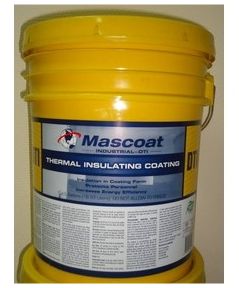
Styrofoam
In this case, you should use only its extruded variety -. Such plates are fixed to the wall by gluing. If necessary, additionally with dowels. Installation is simpler than mineral wool, but there are certain difficulties:
- You will have to properly level the walls, since the penoplex slabs are rigid and also have strict geometry.
- Surface vapor barrier will be minimized. This material is certainly not suitable for wooden buildings, since the condensation formed on the base will lead to its intensive rotting. Such risks can only be reduced by ensuring high-quality wall ventilation, and this requires accurate calculations and additional costs.
The general drawback is that it will no longer be possible to fix anything on walls finished with these materials. For example, hang a shelf, a massive lamp, a picture, etc.
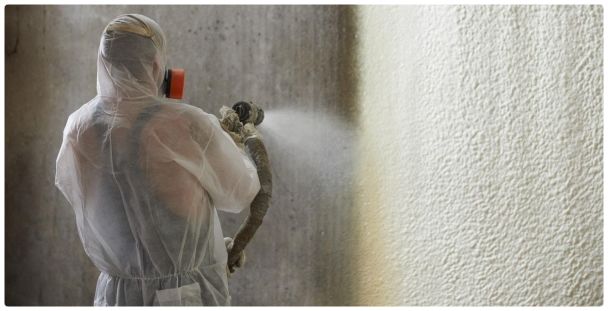
Polyurethane foam
Granular material is not used for insulating walls from the inside - only in liquid form. It has good insulating properties - hydro, noise, heat.
- Completely seals the base, so you can forget about vapor barrier.
- Installed by spraying. Special equipment and protective equipment will be required. You cannot do without the services of professionals. And although for such insulation you will have to pay from 65 rubles / m² (which, in principle, is inexpensive), you will not be able to repair the thermal insulation layer, if necessary, yourself.
Plaster
 Naturally, not just any kind, but thermal insulation. Available for sale ready-made mixtures various modifications and manufacturers. The average price for 1 kg is about 15 rubles. There are many advantages - a thin layer, the possibility of self-application, high vapor permeability, good maintainability.
Naturally, not just any kind, but thermal insulation. Available for sale ready-made mixtures various modifications and manufacturers. The average price for 1 kg is about 15 rubles. There are many advantages - a thin layer, the possibility of self-application, high vapor permeability, good maintainability.
Minus - you will need high-quality waterproofing of the wall, since any of the compositions (to varying degrees) absorbs moisture. This means that eventually the coating will begin to soften and slide off the wall. This limits the scope of application of such plasters.
Conclusion - for rooms with excess humidity it is inappropriate to use.
"Liquid" insulation
If financial capabilities allow, you should pay attention to the products of the American company Mascoat. This material It’s not without reason that it’s called ultra-thin insulation, or . According to experts, its 1 mm layer is equivalent in effectiveness to 0.5 cm thick mineral wool. It is applied like regular paint, and at the same time, in addition to insulating the wall, it provides high-quality waterproofing of the base.
Here are just a few General characteristics products, since they are available in several modifications.
- Recommended layer (mm) – 0.5.
- Consumption (l/m²) – 0.5 – 0.7.
- The temperature range in which the insulation does not deteriorate its properties (ºС) is from -65 to +265.
- Adhesion (%) – 100 in relation to any material. This composition can be used to paint the walls of a building regardless of what materials it is built from - wood, reinforced concrete, brick, cellular concrete.
- Apply to surfaces if their temperature is at least +7. Consequently, rooms in heated buildings can be treated from the inside all year round.
- There are no toxic components.
- The insulation does not burn.
- Excellent maintainability of the insulation, which does not require large-scale renovation of the premises.
- Guaranteed service life (years) – 15.
Consequently, the use of such liquid thermal insulation is not only advisable, but also extremely convenient. The only drawback is the high price. A Euro bucket (about 20 liters) costs about 14,690 rubles. But if you take into account the meager consumption of the product, then 5 - 8 liters will be enough for one room.
In addition, you will not have to install sheathing and spend money on other materials - waterproofing, adhesive (which is also expensive), and so on. If you calculate all the associated costs associated with the installation of traditional insulation, then the cost of such special paint/paint will not seem too high.
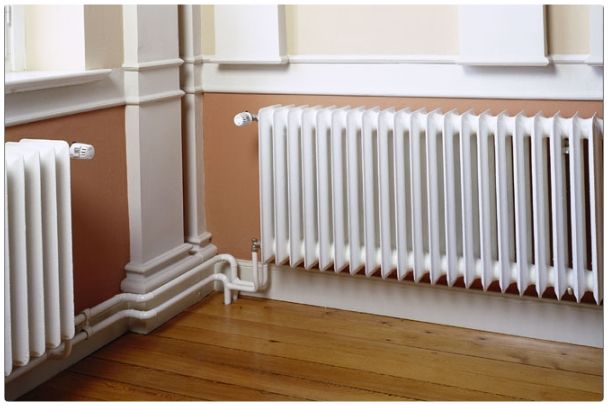
There are several ways to further increase the temperature in corner rooms. What to do?
- Wash the batteries. The need for this is determined by the difference in heating of the outer sections. If it is significant, then most likely there is excess deposits on the inner walls.
- Check the position of the three-way valve (in old houses it is installed on the riser). Perhaps it is this that limits the coolant flow through the radiator. Rotating to the desired position is easy. If the moving part is stuck, you can restore its mobility using WD-40 (“liquid” wrench).
- Reinstall radiators. They should be placed as close to the corner of the room as possible, since this is the most problematic area of the room.
- Check that the battery matches the room parameters. Sometimes the reason for low room temperature is an insufficient number of sections. Unfortunately, not all builders are extremely experienced and conscientious people. They could supply what was at hand, without bothering too much with engineering calculations. The criterion is this: for 2 m² of room – 1 section. For corner rooms, a correction factor of 1.3 is applied.
For example, if the area of the room is 10 “squares”, then there should be at least 5 sections, for a corner one 5 x 1.3 = 6.5. Therefore, at least 7 pieces.
- Apply energy-saving film to the glass (or install). It will reduce natural light by no more than 2%, and heat loss through windows by 40%. Consequently, the temperature in the room will increase, which means the walls will become warmer.
The article discusses only the most suitable options for insulating a corner room from the inside, although thermal insulation materials much bigger. But not all of them are suitable for interior decoration walls, so the choice is somewhat limited.
What to consider
The main method of wall insulation is external. If there is such an opportunity, then first of all you should deal with the thermal insulation of the facade. And the arrangement of the inner layer is only an additional way to reduce heat loss.
Alexey Shamborsky, 05/07/2015
Many apartment residents have a pressing question about its insulation. What prompts such a decision? Of course, the appearance of mold, darkening of sections of the walls, cold rooms. It is believed that the most balanced option is external insulation, but it is not always possible and does not always fully justify itself. In this article we will talk about the option of insulating an apartment from the inside. Let's look at the walls first, then the floor.
It should be taken into account that one of the most common cases is the insulation of a corner apartment, since the external environment covers a large area. We need to take into account the fact that in this sense the lower and upper floors suffer, so we will dwell further on this point (see photo, video).
How to insulate a wall in an apartment
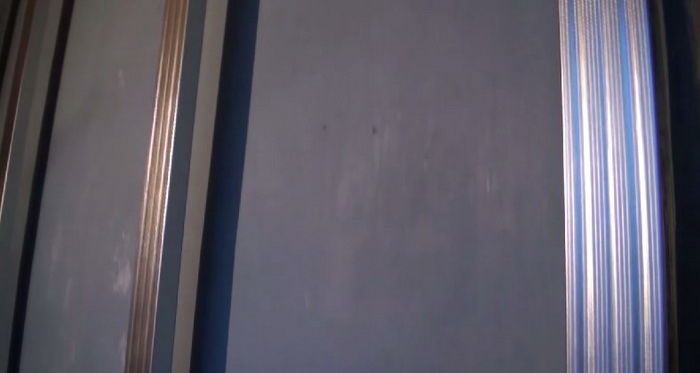
First of all, one of the current insulation methods is selected. Currently, two materials are most in demand: polyurethane foam and polystyrene foam. These are synthetic materials with high characteristics - thermal insulation, water repellency, elimination of biological activity (that is, mold does not appear, insects do not appear). Sometimes a combination finish is used: two dissimilar layers. The latter method has many controversial issues, but at the same time, such insulation is called the most powerful.

Important! - the inner plane of the wall should be as dry as possible. Therefore, it is recommended to carry out work in the warm season or in stable warm room(which happens rarely).
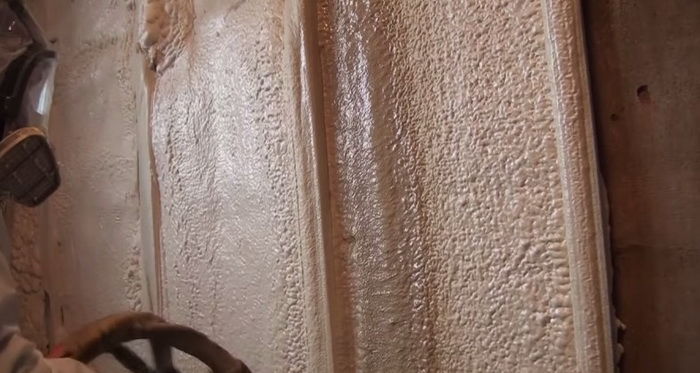
The wallpaper is removed from the wall, sanded and leveled. How well the insulation is accepted depends on the cleanliness and evenness. Used sandpaper and other auxiliary products, brushes, etc. Experts advise paying special attention to those areas of the walls that have been affected by mold or darkened from dampness.

Next, the surface is treated with antiseptics. These are special solutions for removing mold and mildew. It is difficult to recommend something specific, since the choice of such liquids and mixtures is large. Masters advise giving preference to those with which you can have the least contact (no need to additionally pour anywhere, stir, etc.) This is due to the fact that chemical composition funds are quite active.

Next you need to let the walls dry. The next stage is primer. It is recommended to use primers with deep penetration, as only in this case a satisfactory result can be guaranteed. The plaster is applied in an even layer, then it should dry naturally. In some cases, re-priming is performed.
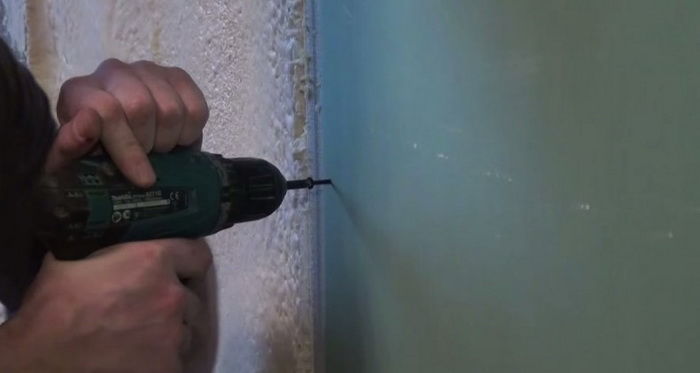
If polyurethane foam is used, a special formwork is installed, divided into cells, into each of which quick-drying foam is poured. This method is not recommended to be implemented independently, as it requires an understanding of the technology and experience working with foam.
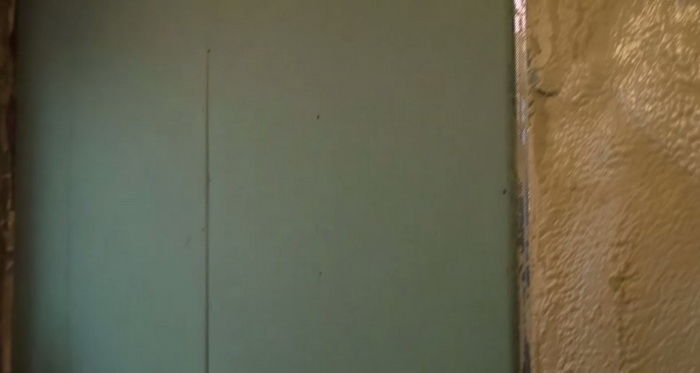
Video
Uninsulated corner apartments are valued cheaper, simply because they are cold. Two adjacent walls in contact with the street, and between them a corner freezing from the inside.... - horror for the residents. There may be two such rooms in a corner apartment.
Insulation from the inside is not the best option solving the problems of the corner apartment, but sometimes only he remains. This method also manages to solve the main problem of a corner apartment - cold.
First of all, it is advisable to weigh the pros and cons. External insulation of a corner apartment will not be cheap.
But even the internal ones cannot be called a pleasant waste - it is expensive, there is many times more hassle, and doubts will remain about the correctness of the actions.
Outside or inside?
But if these arguments are still not interesting, then it remains to consider how to properly insulate corner apartment from the inside, so as not to spread dampness and mold inside the room and not cause other troubles...
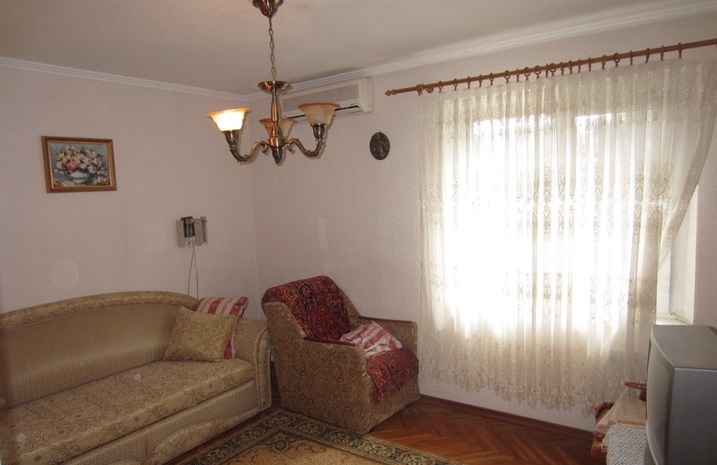
First choose insulation and plan
To insulate a corner apartment from the inside, you need to choose insulation. In this case, the only acceptable option is extruded polystyrene foam. It does not allow steam to pass through and does not accumulate water. And if it is tightly glued to the wall, it will isolate the wall from steam, and condensation inside the room will not occur.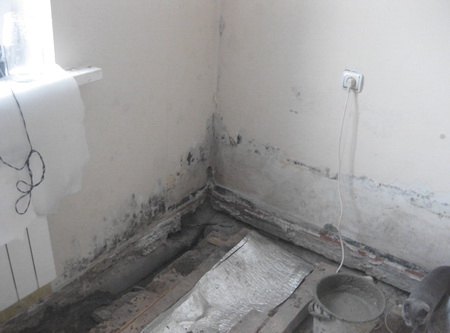
You need to be wary of recommendations to use any other insulation for insulation from the inside, protecting it simply with plastic film. The insulation will still pick up water and the wall will be wet. In any case, the risk is very high, since there is no ventilation.
The thickness of the insulation should be sufficient - from 8 cm for a temperate climate.
Prepare walls, dismantle
As a rule, in a corner apartment, even on walls without windows there are heating devices, pipeline. All heating needs to be redone - moved away from the wall by the thickness of the insulation and finishing.You will have to dismantle the sockets, seal the niches, and extend the wires to the overhead sockets above the insulation. Or dismantle all electrical wiring and re-lay it on top of the finish.
The walls are cleaned of old finishes and weak plaster. The surfaces adjacent to them are also cleared of all finishing by 10 cm - the insulation will be glued there.
On the wall with a window, the window sill is removed and the slopes are cleaned. Naturally, the windows must first be replaced with insulated modern ones for both internal and external insulation.
Next, the walls need to be leveled using cement mixture so that the insulation sheet is completely adjacent to them anywhere. And if the walls are not level, then you will have to apply a thick layer of plaster, which, perhaps, will negate all the savings from insulating the inside in a corner apartment....
Laying insulation
Before applying insulation, the walls must be dry, smooth, primed, and the temperature must not be lower than + 5 degrees. Any deep penetration primer will do, even without antifungal additives.Purchase adhesive for polystyrene foam on concrete and extruded polystyrene foam of sufficient thickness, with a tongue and groove along the edges of the sheets. For gluing joints, sealing seams, cracks, you need a sealant, or better yet, polyurethane-based foaming adhesive in a can. 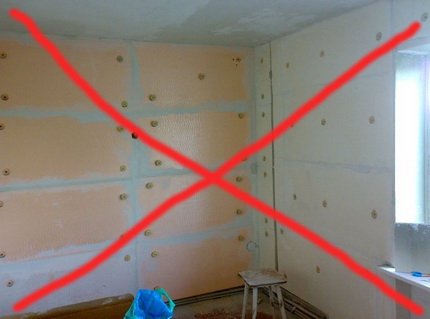
Concrete adhesive is prepared in accordance with the instructions, applied to a sheet of expanded polystyrene in an even layer using a notched trowel, then the sheet is glued with pressure to the wall. They start from the floor itself, while glue is also applied to the floor and other adjacent structures so that there are no gaps left with the insulation.
Sealant is applied to the seams between the insulation sheets. The ligation of seams in rows is observed. In a freezing corner, you don’t need to bandage the seams, but it is better to apply the insulation of one wall to the insulation of another butt-to-wall using polyurethane glue - this will result in a thickening of the layer at the corner.
Fastening with dowels for internal insulation is an unacceptable action. The continuity of the insulation-vapor barrier cannot be violated. All cracks are sealed with particles of polystyrene foam itself and polyurethane glue. Polyurethane foam is not allowed, as it is saturated with water.
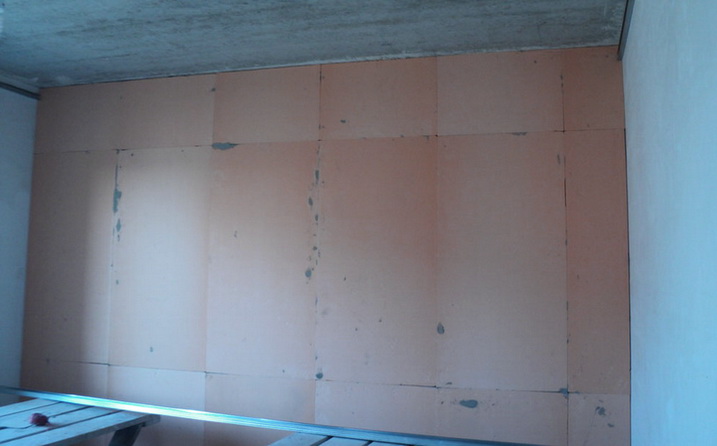
Finishing for internal thermal insulation

The next stage is finishing the insulation. Purchase fiberglass plaster mesh with a density of 160 g per square meter. and higher, cell no more than 5 mm, alkali-resistant (ask for reinforcement of insulation). Then the glue is applied to insulation with a thickness of 3 mm, and the mesh is embedded into it in strips. It enhances all corners. On slopes, special corners with an attached mesh are used. The mesh is smoothed with a layer of glue.
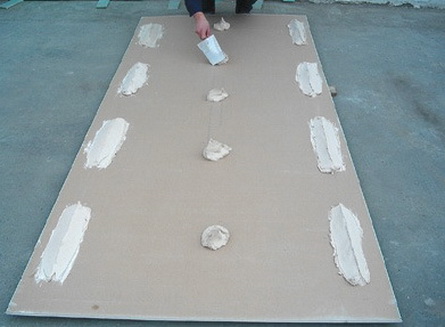
Any plaster finish is applied on top. But it is better to stick plasterboard sheets with a thickness of 20 mm or more. Expanded polystyrene indoors must be hidden behind a fire barrier with a flame resistance of at least 30 minutes.
Also, the polystyrene foam should not come into contact with wiring or hot piping. These systems will have to be protected at the stage of gluing the insulation with barriers made of mineral wool with a thickness of at least 50 mm, closed on the side of the room with a vapor barrier on the sealant.
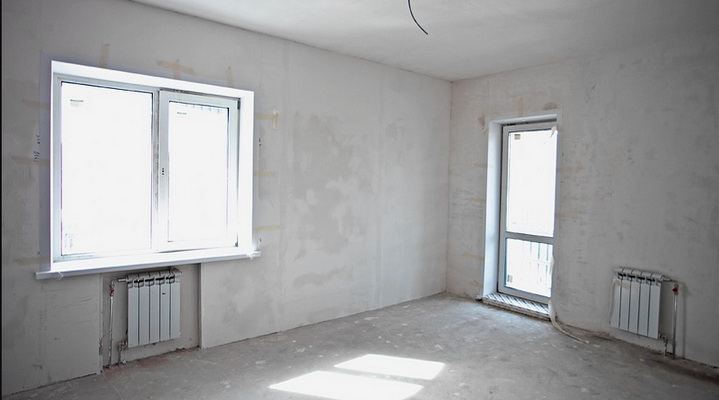
In general, there is a lot of work and costs to be done. Insulation from the inside of a corner apartment cannot be called simple. But, despite everything, the cold walls will be hidden behind a durable warm layer. In the corner apartment it will become “an order of magnitude” warmer in winter... All that remains is to think again about the correctness of the external insulation...
The corner room always remains the coldest, despite the hot radiators. In order not to depend on the vagaries of the weather, it is worth thinking about how to insulate a corner apartment.
Where does cold air come from?
Corner apartments are located in the outer entrances. The two walls that form the corner of the house are blown by cold winds. Such housing requires additional insulation.
If you insulate a corner apartment from the inside, it will become comfortable to live in.
But first you need to find out where the cold air is coming from. On the ground floor, the source of additional “freshness” can be the basement, on the last floor – the attic. Here the problem will be solved by a warm floor or a good suspended ceiling.
Most often the reason is in the walls. It could either be of poor quality brickwork, or cold bridges in the joints between panels
In low-rise buildings, the facade can be finished with penoplex. External work is also possible in high-rise buildings, but only for residents of the first floors. And even then, if there is no ban from the city authorities on changing appearance Houses.
How to insulate a wall in a corner apartment from the inside
This method is chosen by most residents of corner apartments. It is easier to implement than external insulation.
There are several technologies that can improve the microclimate of a corner apartment:
- Using polystyrene foam is a simple and inexpensive way. But it cannot be mounted on a wall insulated with any type of foam plastic. hanging shelves and cabinets - the connection will be fragile.
- Application of mineral wool. This material crumbles easily, so indoors it needs to be lined with plasterboard or decorative panels.
- Insulation with plaster. In terms of environmental friendliness, this method is the most attractive.
Before laying any insulation, the walls should be cleared of wallpaper and puttied.
Expanded polystyrene slabs are glued using a special compound onto a wall that has been previously coated with waterproofing. Large gaps between them are foamed. Then the wall is covered with reinforcing mesh and plastered. Mineral wool is fixed to the wall using wooden or metal slats. It should be surrounded on both sides by layers of vapor barrier.
The plaster is applied in three layers:
1) spray the walls with a liquid composition;
2) tightly primed;
3) carry out final leveling.
It’s even easier than using plaster to insulate a corner apartment from the inside with special thermal paint. Such compositions can eliminate cold bridges and also maintain a pleasant microclimate in hot weather. Ready-to-use thermal paint is sold in hardware stores. Apply it with a spatula or a figured roller.
The choice of insulation method depends on the construction skills of the apartment owner, his financial capabilities and desire to hire professional finishers.
The onset of cold weather is usually accompanied by the onset of the heating season, which allows you to maintain a comfortable temperature in the apartment. However, the heating system does not always cope with its direct task. Various factors can contribute to this, for example, a city boiler house serves too many houses, and as a result, it simply cannot cope with servicing the part of the city entrusted to it. An old house with a lot of cracks does not retain heat well. Its corner location also does not help retain heat in the apartment.
Corner apartments are distinguished by one main feature - they have not one, but two entire walls bordering the street, unlike apartments in the middle, where the most that can happen is a draft, which can be easily eliminated by closing the doors and windows. If there are windows in each corner wall, then the cold penetrates into the apartment even faster. In this case, even the presence of a radiator in each room does not help, and the location of the radiators is clearly designed to heat each square meter in the room.
Often the corner between adjacent walls of a room facing the street freezes. As a result, and plaster, this leads to. The room becomes damp and an unpleasant smell appears. Of course, in the end the question arises of how and how to insulate the wall from the inside in a corner apartment. This will not only allow you to make an apartment in a “Khrushchev” or in an equally cold panel house warm, but will also avoid dampness and the spread of mold. Further in the article, you will be able to familiarize yourself with the suitable types of insulation for walls, as well as the process of insulating rooms, both panel and in brick house, and you will also be able to clearly see the entire work process on video material.
Review of wall insulation
Today there is a wide variety of insulation materials, and they are strictly divided into those that can be used externally and those that are used only for internal wall insulation. It is worth noting that there is no universal insulation; any of them has both positive and negative sides. However, for each of them there are certain requirements that they must strictly comply with:
- Decent thermal conductivity
- Airtightness
- Moisture absorption
- Environmental friendliness
- Fire resistance
- Long service life.
Mineral wool . This insulation is the most common and is made mainly from basalt. It belongs to materials with a minimal degree of flammability, which makes it fireproof. When interacting with fire, there is no caustic smoke that releases harmful substances.

How to insulate a wall in a corner apartment. Installation of mineral wool does not require much effort, since the material itself is plastic and pliable. Fits tightly to the wall and does not deviate. However, over time, as the material accumulates some form, it becomes deformed. It is also believed that mineral wool contains some substances that have a negative effect on the respiratory tract. The decent weight of the insulation deserves special attention.
Expanded polystyrene . This material is polystyrene, which has been well foamed. Its cost is minimal, and installation is easy and simple, which makes it quite popular. About 90% of its composition is air, which makes it completely safe for health. The material is universal and can be used to insulate walls in an apartment both inside and outside, since it can withstand sudden temperature changes from -180 to +80.
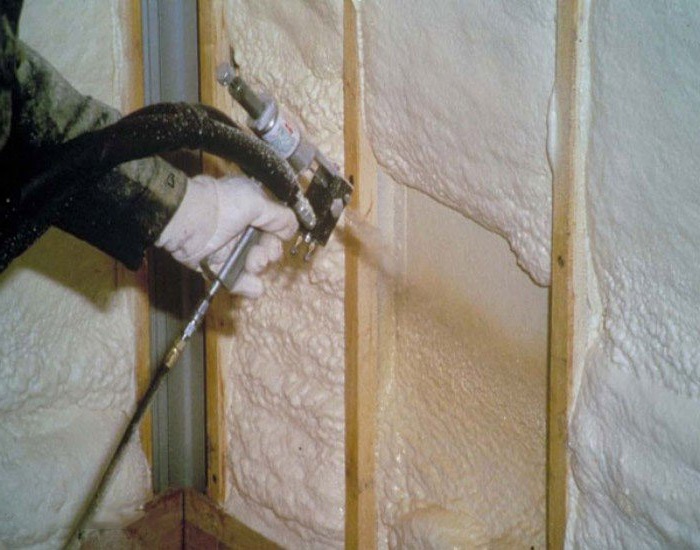
Expanded polystyrene can be attached to any material, since it is lightweight and does not require a special system for installation. Another advantage of this insulation is its durability; it will last for decades. However, this material is not suitable for every home. For example, due to its ability to create condensation inside, it is completely unsuitable for wooden house, as this may lead to rotting. If the use of this particular material is unavoidable, you can try to make ventilation. Another important disadvantage of the material is that it is flammable.
We insulate the wall from the inside in a corner apartment with polyurethane foam . This material is also called polystyrene foam; carbon dioxide or oxygen is used to create it. Due to the fact that polyurethane foam consists of almost 98 percent gas, it retains heat really well. The cost of the insulation is not too high; most often it is sold in sprayed form, after application it hardens to the desired consistency. This creates the required thermal insulation.
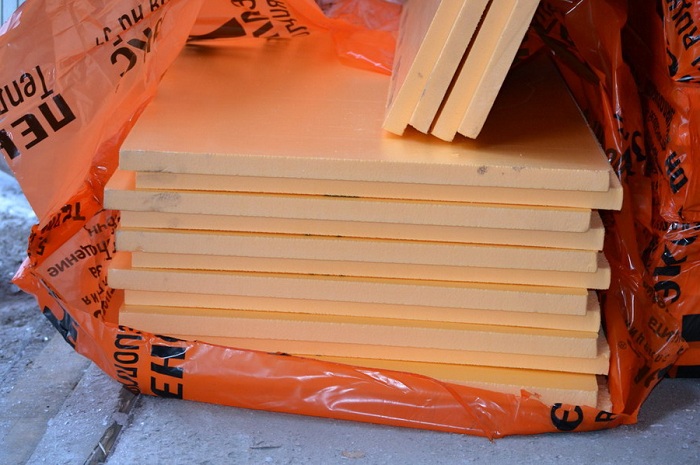
The material does not allow moisture to pass through at all; even steam cannot penetrate through it. High levels of noise insulation and service life, fireproof. Can be used in a wide temperature range and is practically safe for humans.
The first step in insulating walls in a corner apartment is to gain access to the wall. Accordingly, this work must be carried out before making cosmetic repairs in the apartment.
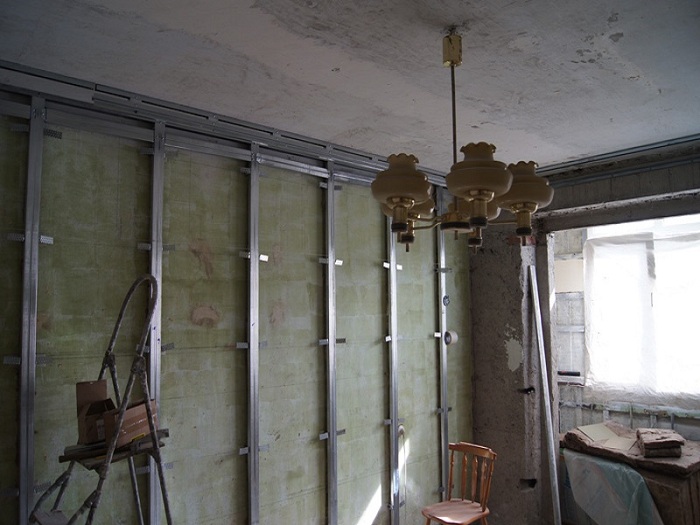
The next stage is applying to the walls waterproofing material in the form of special membranes made of polymers. Most often they use ordinary polyethylene films, the thickness of which is about 0.2 mm. The important thing here is to cover the entire surface without leaving a single area. Accordingly, the membrane is selected precisely to the size of the room; if a single sheet of such height cannot be found, you can use fewer strips, the joint of which should have been taped with construction tape.
Next comes the installation of the sheathing, which can be made of either metal or wood. If the bet is on wood, pre-treatment with an antiseptic is necessary. It is required that the distance between the components of the sheathing structure be slightly less than the width of the insulation being laid. This will allow you to insert the insulator without leaving gaps or cracks in the wall.
The next step is laying the insulation, modern options material are made in the form of mats with one spring side. When squeezed, the mat becomes denser, and then takes on a natural shape. This moment greatly simplifies the installation process.
The next step is to tension the vapor barrier material along the entire plane of the wall. It allows you to protect the insulating material from air vapors that contain excess moisture. No less important here is installation without cracks and gaps. All joints must be sealed with sealant.
Technology of how to insulate a wall from the inside in a brick house
Insulating the walls of a corner apartment in a brick house is somewhat different from a similar process in a panel house. However, the technology here is quite simple and does not require special skills and materials. Let's consider the technology of wall insulation using polystyrene materials.
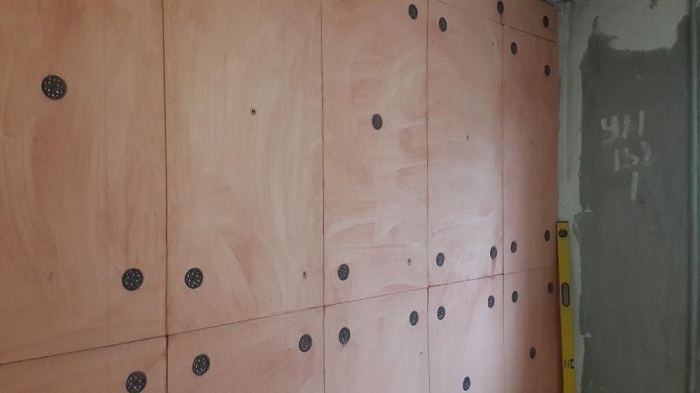
First you need to process brick wall properly. If there is no plaster on the wall, be sure to cover the bricks with it. If you plan to insulate an already living room, then paint and putty are a prerequisite. You also need to level the wall, seal the gaps and apply a deep penetration primer, which will contain additives with antiseptic properties.
Next, you should dilute the adhesive composition exactly as indicated in the instructions, and then cover the surfaces of the walls in the corner apartment with the resulting mixture. Apply the glue with a smooth spatula, then work the surface with a serrated spatula.
Now you need to carefully and methodically glue the polystyrene sheets to the wall, in even layers, pressed tightly against the wall. It is imperative to monitor the possibility of deviations. There is no need to secure the surface with dowels, since the glue should perfectly adhere the insulation to the wall.
The slabs should be laid very tightly, while avoiding cracks that may form during the joint. The more tightly the sheets are pressed to each other and to the wall, the higher the thermal insulation value will be. Further actions depend directly on what is planned in the end. If putty is planned on top of the insulation layer, then it is necessary to first apply a primer. If it is plaster, then you will need to create it from a material like fiberglass. Two layers of the composition are applied on top of it.
Self-insulation of the walls of an apartment or house video
When thinking about solving the problem of how and with what to insulate a wall in a corner apartment from the inside, you should first choose insulation. The method of installing insulation directly depends on the type of walls of the house, since brick and panel have their own methods and nuances.
